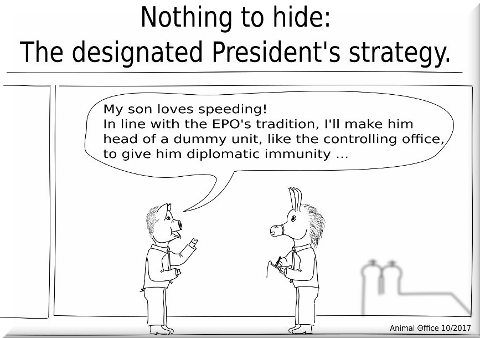

EARLIER this week the CCIA's head of patents (Patent Progress) wrote: "New patent SCOTUS cert grant in Return Mail (is the gov a person for purposes of IPR.)"
"We’re against the concept of immunity for anyone, having written a lot about EPO corruption, showing how immunity was misused to perpetuate crimes without anyone being held accountable."Remember that "corporations are people" and bribes are "free speech" to SCOTUS. But SCOTUS does not, however, tolerate USPTO-granted software patents and it definitely supports IPRs as Constitutional. Guess what comes next... "Is the Government a Person?"
That's how Dennis Crouch put it. I have actually received legal threats -- both online and at my doorstep -- from lawyers who lie shamelessly, painting massive corporations as "native American tribes" for tax and patent purposes. They guard scammers and criminals, then they threaten critics (who dare point out that they grossly abuse sovereign immunity).
Anyway, this is how Crouch put it:
The outcome here is an open question: The AIA doe not define the term; nor has the PTO through rulemaking; nor is there any real legislative history on point. The petition cites to the 2000 Supreme Court decision of Vt. Agency of Nat. Res. v. US ex rel. Stevens, 528 U.S. 765, for the proposition that “person” does not ordinarily include the “sovereign.”
In considering the issue, the Federal Circuit first noted that “Return Mail has waived reliance on the term “person” because it failed to make any arguments in that regard in its opening brief.” The court then went on to explain that – if the issue is somehow “not waivable” then the correct interpretation of “person” in this context would include the Government — noting that there is “no hard and fast rule of exclusion, and much depends on the context, the subject matter, legislative history, and executive interpretation.” Wilson v. Omaha Indian Tribe, 442 U.S. 653, 667 (1979). In general though the Federal Circuit’s statutory construction analysis in this case is quite lacking.
On October 24, 2018, the Western District of Pennsylvania issued a favorable claim construction to Blast Motion, Inc. (“Blast Motion”) in the ongoing five-patent lawsuit between Blast Motion and Diamond Kinetics, Inc. (“Diamond Kinetics”). Diamond Kinetics challenged, and lost, the key term it had selected for construction.
[...]
Diamond Kinetics attempted to narrow the scope of the claim language of the ’527 patent by proposing a construction that would have limited the patented invention to a “simultaneous” broadcast such as television broadcasting. The Court soundly rejected Diamond Kinetics’ proposed limiting construction and interpreted “broadcasting,” as used in the ’527 patent, to mean “transmitting information capable of being received by multiple display devices.” As a result, the Court’s order confirms the strength of Blast Motion’s infringement allegations against Diamond Kinetics.